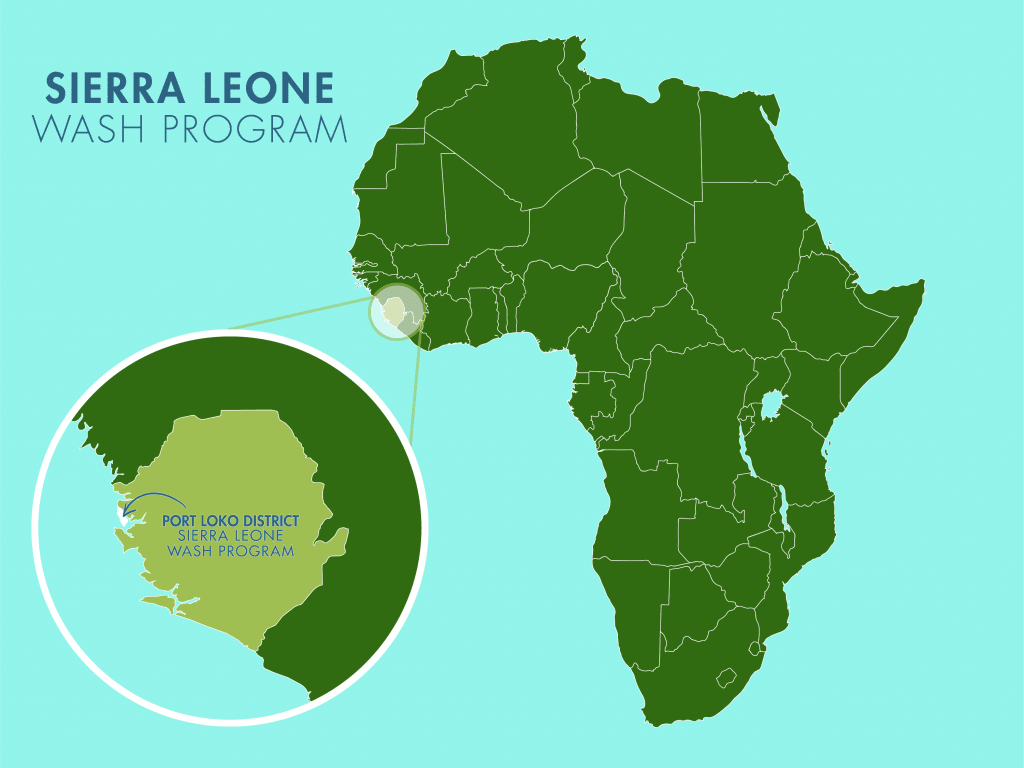Daries Salaam Community is home to 258 residents who rely solely on two unsafe surface water sources for their daily needs. These open streams lie beyond the community, down steep, rocky paths that take nearly an hour to navigate on a round trip. Collecting water is physically demanding, and the waiting lines are long, averaging 30 to 35 minutes, especially during the dry season when the streams run low.

Community members head to the stream.
During the rainy season, floods wash debris, soil, and waste from the hills into the streams, turning the water brown, foul-smelling, and unsafe. Agricultural runoff and animal activity worsen the contamination, while the stagnant water becomes a breeding ground for disease.
“There is a problem with the appearance of the water, especially in the rainy season. When rain starts to fall and mixes with the water, the color will change. That will make it have an unpleasant smell and taste bad,” noted the field team during observation.
The terrain itself adds another layer of hardship. The path to the streams is narrow, hilly, and overgrown with bushes, making each trip a risky journey. Women and children often slip or injure themselves as they balance heavy containers on their heads. With every trip, fatigue, fear, and frustration deepen.
The community’s dependence on contaminated surface water has led to a high incidence of cholera, diarrhea, and other waterborne diseases, especially during the rainy season.
“In the rainy season, when all filth is washed away and mixed with the water of the source, it will lead to contamination and hence lead to frequent stooling like cholera and diarrhea,” reported Field Officer Alimamy Kanu Lamin.
The crisis affects more than just health. Fights and quarrels are common at the crowded sources as people compete for limited water. Meals are often delayed because families must wait for hours to fetch enough water to cook. Children arrive late to school or miss class entirely because they must help their parents fetch water. The shortage has quietly strained relationships and limited opportunities across the entire community.
Attempts to solve the problem have been unsuccessful. In the past, residents attempted to repair an old community pump, but the system soon failed again. Without a clean, reliable water source, life in Daries Salaam continues to revolve around scarcity.
Among those affected is Aminata Fofanah, a 28-year-old trader who spends much of her day fetching water before she can begin her business.

Aminata is standing in the contaminated water to fill her bucket.
Aminata makes up to five trips a day, each taking nearly 50 minutes to complete. By the time she returns home, exhaustion sets in. The physical strain of climbing hills with full containers leaves her weak and sore.
"The hilly and rocky road to the water source is a great concern. The hill always makes us tired while trying to climb it. That always makes our bodies weak," said Aminata.

Aminata (front) hauls water home while carrying her baby on her back.
Her concern goes beyond fatigue—it’s about safety and contamination.
“The waterpoint is also open to contamination. This is because it is [an] open source, and it is accessible to all [the] wild animals that can contaminate the water. Agricultural activities around the water source may also contaminate the water and make it unsafe for drinking purposes. Another reason I am concerned about the safety of the water source is that it is beneath a hill, and in the rainy season, there is erosion that washes away everything and dumps [it] into the water. Therefore, drinking water from this current water source is not safe for human consumption," Aminata continued.
Despite these risks, Aminata and her neighbors have no alternative. Every day, they continue the long, dangerous walk because water—no matter how dirty—is a necessity.

Still, she holds onto hope: “I will be happy if a new water point is built in our community. This is because it will make me safer by providing safe and pure drinking water for me and the entire community. There will also be enough water to undertake household activities that have to do with water. More so, I will no longer go to the current water source to fetch water because it is not safe for drinking purposes.”
“As a trader, I will have more time to engage in my business activities if I do not have to spend so much time fetching water. I will also engage in other household activities like cooking, cleaning the entire house, latrine, and laundry if I did not have to spend so much time fetching water," Aminata said.
To Aminata, clean water represents not just convenience but survival itself.
“Water is life because without it, we cannot survive. Therefore, I need water daily to make my life easy. For instance, I will not be able to drink, cook, or clean the entire household if there is no water within my premises. With the help of sufficient water, I will be able to practice good hygiene and hence improve my health.”
The people of Daries Salaam have endured years of hardship, walking miles each day to fetch unsafe water that often makes them sick. Their perseverance reflects their strength, but it should not be their daily reality.
A clean, safe, and nearby water source will transform life here. For Aminata, it means more time to work and care for her family. For students, it means more time in the classroom. For the entire community, it means restored dignity and health.
The solution is clear, and for Daries Saleem, it begins with water.
Steps Toward a Solution
Our technical experts worked with the local community to identify the most effective solution to their water crisis. They decided to rehabilitate an unsafe, insufficient well to convert it to a borehole well.
Rehabilitating a Well
Abundant water often lies just beneath our feet. Aquifers—natural underground rivers—flow through layers of sediment and rock, offering a constant supply of safe water.
The well marked for this overhaul is dry for several months a year and needs major work to supply adequate, clean water to the community year-round. A hand auger will be lowered inside the well, powered by a drill team. The team will work to drill several meters deeper to hit a sufficient water column to ensure the well supplies water throughout all seasons. As the team drills, the casing will be installed, transforming the bottom of this well into a borehole. PVC piping will connect this lower system directly to the pump, a component we know will also improve water quality. Finally, we will reconstruct the platform for the well and attach the hand pump.
Once this plan is implemented, everyone within the community will have access to safe drinking water in quality and quantity, even through the dry months.
Community Education & Ownership
Hygiene and sanitation training are integral to our water projects. Training is tailored to each community's specific needs and includes key topics such as proper water handling, improved hygiene practices, disease transmission prevention, and care of the new water point. Safe water and improved hygiene habits foster a healthier future for everyone in the community.
Encouraged and supported by our team's guidance, the community elects a water user committee representative of its diverse members. This committee assumes responsibility for maintaining the water point, organizing community efforts, and gathering fees to ensure its upkeep.

 Borehole Well and Hand Pump
Borehole Well and Hand Pump

















